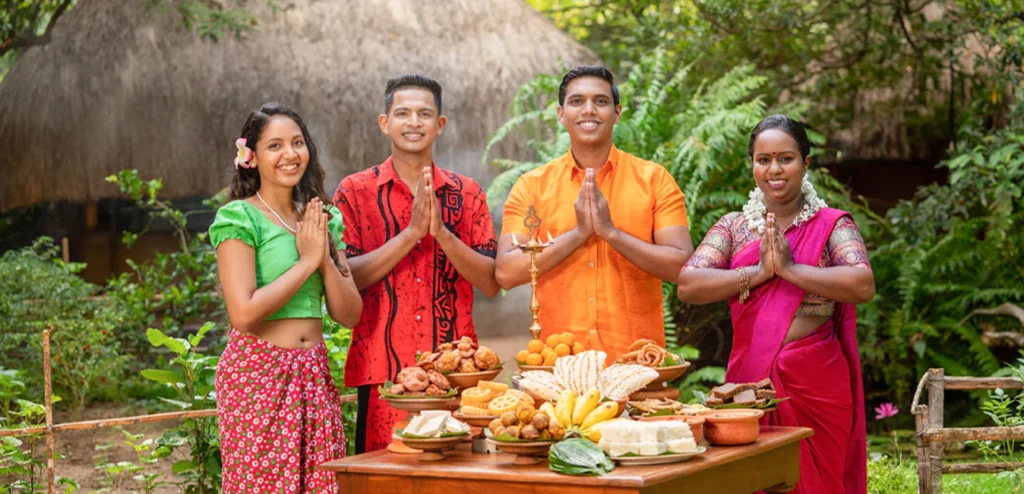
Sinhalese New Year, generally known as Aluth Avurudda in Sri Lanka, is a Sri Lankan holiday that celebrates the traditional New Year of the Sinhalese people and Tamil population of Sri Lanka. It is a major anniversary celebrated by not only the Sinhalese and Tamil people but by most Sri Lankans. The timing of the Sinhala Tamil New Year coincides with the new year celebrations of many traditional calendars of South and Southeast Asia. The festival has close semblance to the Tamil New year and other South and Southeast Asian New Years. It is a public holiday in Sri Lanka (02 Public Holidays – Normally Shops Close for Around One Week Following the New Year). It is generally celebrated on 13 April or 14 April and traditionally begins at the sighting of the new moon.
According to Sinhalese astrology, New Year begins when the sun moves from Meena Rashiya (the house of Pisces) to Mesha Rashiya (the house of Aries). It also marks the end of the harvest season and of spring.
History
Cultural anthropological history of the ‘Traditional New Year’ which is celebrated in the month of April, goes back to an ancient period in Sri Lankan history. People think that the celebration of the new year is the change of thoughts too. Various beliefs, perhaps those associated with the fertility of the harvest, gave birth to many rituals, customs, and ceremonies connected with the New Year. The advent of Buddhism in the 3rd century BC led to a re-interpretation of the existing New Year activities in the Buddhism light[citation needed]. The majority of the people in the country are Buddhists, and as such, the Buddhistic outlook was predominant in transforming the New Year rites to what they are now.
Hinduism, on the other hand, existed side by side with Buddhism, in medieval times. New Year practices interpreted in the Hinduism way developed among the Hindus. Buddhism and Hinduism were historically connected with each other. Their philosophies were running along parallel dimensions, except for certain ultimate truths concerning the self, the way to achieve emancipation and the nature of a creative god (which Buddhism denies) and nirvana. There was no serious contradiction in New Year rituals that are found among the Buddhists and Hindus.
The mythological backdrop of the New Year is probably based on Hindu literature. The Prince of Peace called Indradeva descends upon the earth to ensure peace and happiness. He comes in a white carriage wearing on his head a white floral crown seven cubits high. He first dips, like a returning space capsule plunges, breaking earth’s gravity, into a `Kiri Sayura’ or sea of milk.
Modern-day activities related to the celebration of the traditional New Year is based on auspicious times given by the astrologers. The New Year celebration, therefore, can be thought as a complex mix of Indigenous, Astrological, Hindu, and Buddhist traditions.


